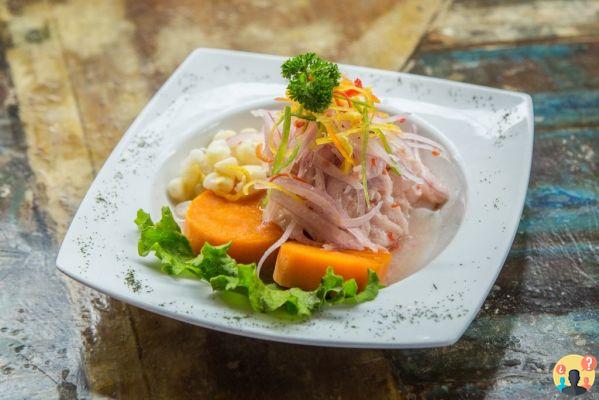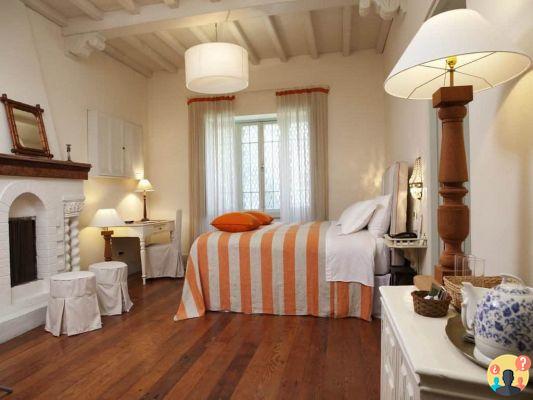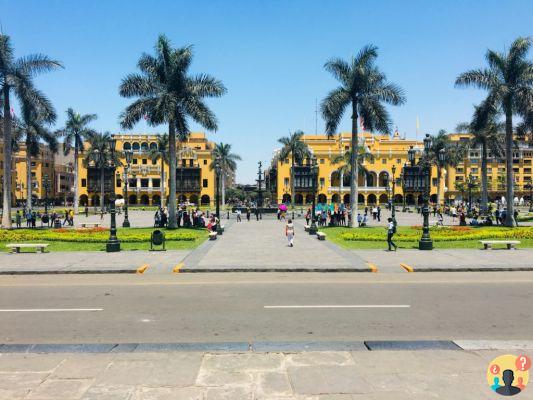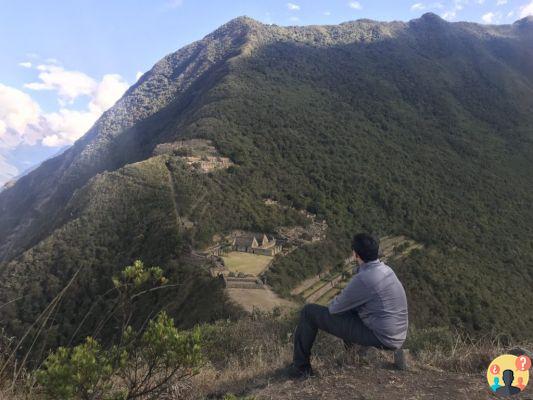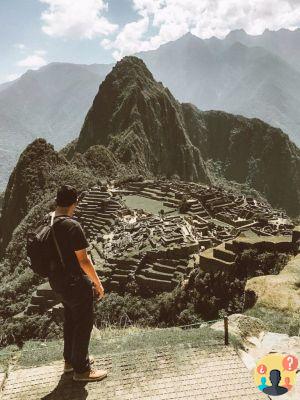Choquequirao, the sister city of Machu Picchu, is one of the secrets worth uncovering in the country. The archaeological site holds a thousand and one riches from the ancient world in an atmosphere still unknown by conventional tourism.
Hidden among the subtropical forests of the Andes, Choquequirao it is one of the most remote Inca settlements. Its name means, in the native language, "cradle of gold". It is not by chance that the archaeological complex began to draw a lot of attention from archaeologists and researchers due to its similarity to Machu Picchu. The lost city has vestiges of equal importance and history and has become known as the “sacred sister” of the most famous Inca city the world.
In this post you will read:
- How to get to Choquequirao
- What you need to know before you go
- The trail to Choquequirao
- Internet chip not Peru
- Peru travel insurance
- Flights to Peru
#ParaNãoForget: Have you bought your travel insurance yet?
Get your discounted plan using the coupon FORTRAVELOVERS (5% off).
Click here and enjoy!
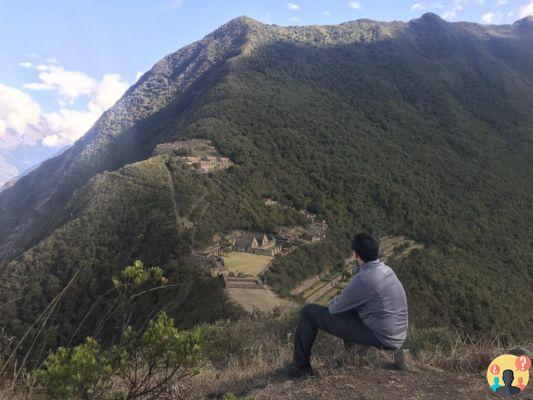
While Machu Picchu receives around 2,500 tourists a day, Choquequirao remains a lost and deserted city. The reason for the few visits is quite evident, as it takes 4 to 5 days of hiking far from any road or hot shower to get there. The reward, however, is worth any effort: getting to know a reclusive Inca city for over 500 years, a genuine symbol of civilization's resistance during the advance of the conquerors.



Several theories talk about the city's role in the distribution and population network of Andean cities, some believe that Choquequirao was an important cultural and religious center. Others talk about the city as a strategic point that connected the forest with other centers of the empire. The city is organized into nine architectural groups, with a system of platforms and irrigation, in addition to houses and temples similar to those of Machu Picchu.
Choquequirao was chosen as the best destination in the “Best In Travel 2017” list, published by the renowned guide Lonely Planet. We took on the four-day trail, at almost 3.500 meters of altitude, to discover the lost city and wrote down all the tips for you:
How to get to Choquequirao
Cusco is the best city to arrive in Peru before starting the trail. Reserve a few days there for acclimatization to the altitude, in addition to taking the opportunity to discover the wonders of the region (check out our first post in the series on what to do in Cusco, by clicking here).
To get to the beginning of the trail to Choquequirao, it takes four hours by van from Cusco. There are two options for the beginning of the trail: the newest option is to leave Capoliu. A road was recently opened up there, saving between 2 and 2h30 of walking. The other option is to start on the old and longer path, leaving San Pedro de Cachora.

The companies that offer the tour prefer to leave Capolui because they can do the trail in 4 days and no longer in 5 days.
What you need to know before you go
The most important thing is to know what is essential to carry in your suitcase:
- Wet wipes;
- Toilet Paper (99% of stopovers do not provide),
- Repellent;
- Dorflex or similar;
- comfortable socks;
- Solar filter;
- Hat with neck protection or a scarf to wear around the neck;
- Flashlight.
The trail to Choquequirao
The Choquequirao experience begins long before arriving in the city. Trekking is as amazing a part as the end goal itself. The path, of about 30 km, crosses stunning and unforgettable scenery. It crosses valleys, canyons of up to 2.000 meters, rural settlements, and a dense forest rich in fauna and flora. It is common there to find deer, spectacled bears (we had the opportunity to see one on top of the mountain), among other wild animals. The route starts at the Apurimac River and continues uphill, passing by the Santa Rosa and Marampata farms, until reaching Choquequirao. The effort is rewarded not only with the landscape, but with the intriguing mysteries of this ancient people.
1th day
We leave at 8 am from the hotel in Cusco towards Passo de Capuliyoc, which is 6-7 km (about 2 hours walk) from Cachora. There is a small restaurant that serves lunch (which costs between 20-25 soles) and a market where you can buy water, food, hats and even other souvenirs.

Our next stop was after 7km of hard walking. Most of the time is downhill but make no mistake, it is very tiring. Those who have knee problems, especially, need to be very careful. On the way, you can see the icy mountains Padrayoc (5.482 m) and Wayna Cachora – not to mention the impressive view of the Apurimac Valley. After 4 hours of walking we arrived at the Chiquisqa camp, where we spent the first night.

2th day
We woke up around 06:00h, had a coffee reinforced with fruits, omelet and even jam, all this to be prepared for the 11 km (3 km downhill and 8 km up) of the day. It was a 5 hour walk to the lunch stop (10km) in Marampata.


There are other options for rest on the way, the first is at Playa Rosalina (4 km from Chiquisqa), then there is Santa Rosa (6 km from Chiquisqa) or Santa Rosa Alta (7 km from Chiquisqa) until you reach Marampata. The trail is very heavy and tiring, which gave us the right to cramps in both legs. Lunch was served in a tent set up by the team.
After resting, we walked for another 2h30min (including a 25min stop) for about 2-3 km. This is a less tiring stretch than the previous one. The control is in an area called Sunchupata, where you have to pay 60 soles to enter the park.
We spent the night at the Choquequirao camp, which is about 40 minutes from the city of Choquequirao.

3th day
Early morning to discover the holy city. We woke up at 5:15 am, entitled to a delicious breakfast served at 06:00 am because we wanted to leave very early to explore Choquequirao.
After breakfast, a walk of about 40-50min until finally reaching the lost city of Choquequirao. The first stop was at Uzno – an astronomical observation point and where sacrifices were made in civilization.

We walked to the main or central square (of the arms) and had to walk (up and down as usual) to reach other parts of the city, such as the temple and the house of the Kings. We went down for about 20 min to the place where the Llamas were (Terraço de llamas do sol). Then we climb to the top where the houses of the nobles are located – Hanan pata area – a place with a very privileged view. It took about 4:30h to explore the archaeological site. In addition to history, culture and mysteries, Choquequirao offers a beautiful view of the region.
We walked back to our camp for lunch, rested for 1 hour and then continued on the hike for 4 hours, until we arrived in Marampata, where we spent the night. Also, the facilities at this campsite are great, with a hot shower (costs 10 soles) – great news after almost 3 days without access to hot water.
4th day
Last night sleeping in tents and it was time to leave for the final leg of this long journey. By Peruvian marking, it is a 7 km walk to the Mirador de Capuliyoc.

We woke up at 4:00 am. Breakfast was served at 04:30 am and at 05:15 am we were on the trail. The course was completed in 2h40, much faster and less painful than expected. After arriving at the Mirador de Capuliyoc, at 09:30 am we leave by van for San Pedro de Cachora for a special farewell lunch.
The special lunch is called “Pacca manca”. For the meal, they light a fire and throw a lot of stones, after they are very hot (between 1-2 hours in the fire), they remove the flames and put various types of potatoes underneath, cover them with some stones, then place the seasoned meats (lamb, chicken and pork) and sprinkle other vegetables and leafy greens on top. Then just cover everything and wait 25 min.
The result was a delicious lunch, paired with tomato salad and mushroom ceviche. Another 3 and a half hours on the road and Cusco is our final stop, after four days of walking and five days without cell phones and internet (which is a huge advantage, which has become increasingly rare in travel).


It was an adventure full of physical and mental challenges, but satisfaction and contact with nature are unparalleled. Exploring Choquequirao is a perfect experience for those who love adventure tourism, with the ultimate reward of getting to know a millenary and secluded city, full of secrets still little revealed by conventional tourism.
Internet chip not Peru
It is getting easier and cheaper to have unlimited internet throughout the trip Peru. Nowadays you can buy an international cell phone chip online while you're still here in España. We always use and love it!
You receive the sim card at your address and then just insert it into your cell phone to reach your destination with unlimited 4G internet working.
Also read more chip tips:
- International Cell Phone Chip – Which is the Best and How Much Does It Cost?
- America Chip Discount Coupon – 10% off Travel Chip
Want to have unlimited internet throughout your trip?
Compare prices and buy your international travel chip in advance at America Chip.
Peru travel insurance
Buying travel insurance for Peru is an excellent way to ensure a smooth trip and avoid worries. Having the assistance of insurance gives you the peace you need to enjoy your destination and know that you have support if you need it. Also enjoy our Insurance Promo discount coupon. - SEE PRICES
Flights to Peru
Looking for a good deal and flight prices? When buying tickets to Peru, it is worth taking a look at the website Promo Tickets.
It is quite common to find cheaper and better flight options than on other sites. We always use and it's worth it 😉
Read all our Peru tips and posts
- New Year's Eve in Cusco Peru
- Where to stay in Lima – The best neighborhoods and hotels in the city
- Where to stay in Machu Picchu – What is the best option?
- What to do in Cusco – Top attractions
- Tours in Cusco – 10 must-see programs in the city
- Cusco
- Cusco travel insurance – Find the best
- What to do in Lima – Tips for those visiting the city from 1 to 5 days
- Where to eat in Lima – 20 best restaurants
- Honeymoon in Lima – 7 Tips for the Perfect Trip





